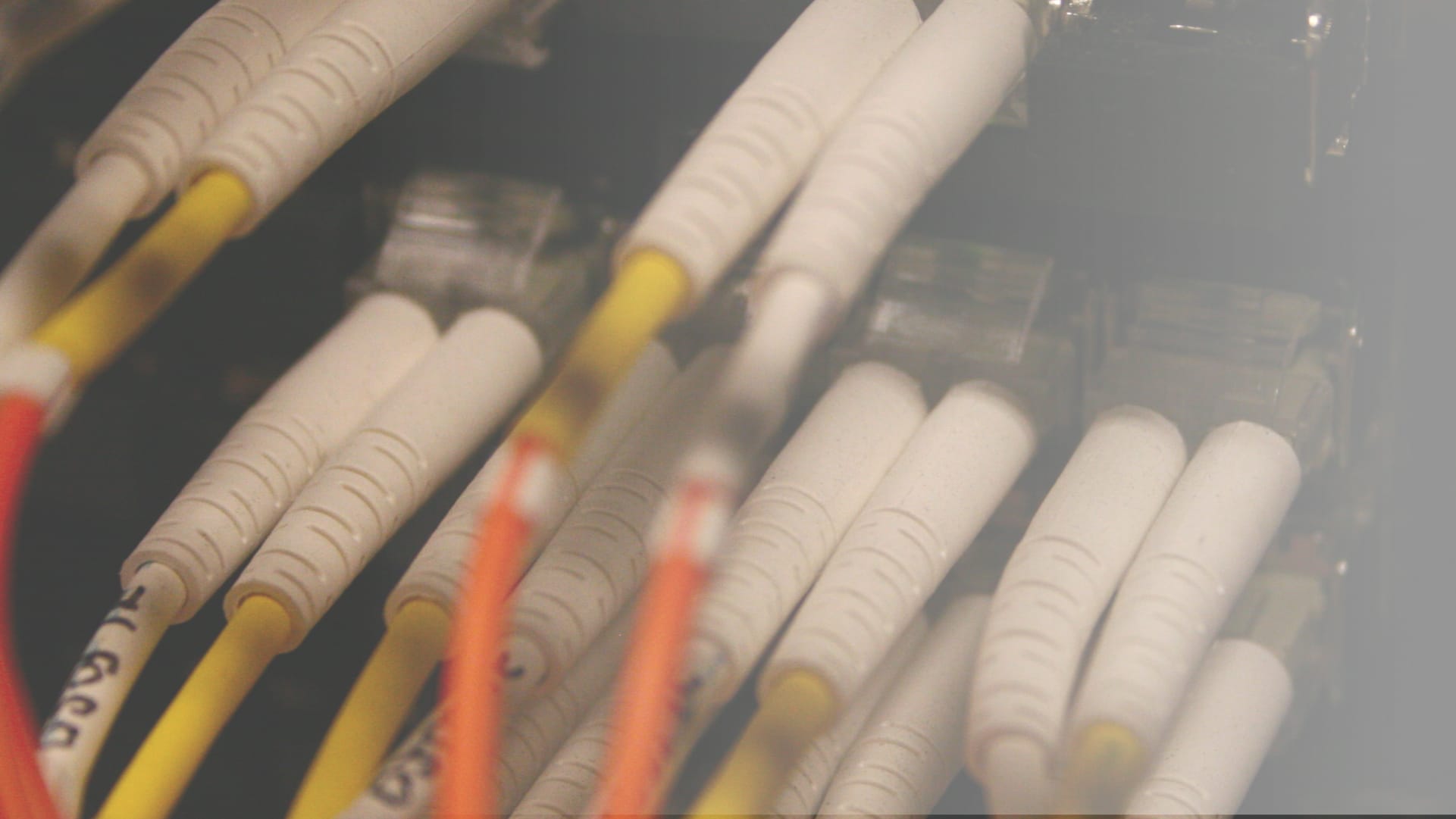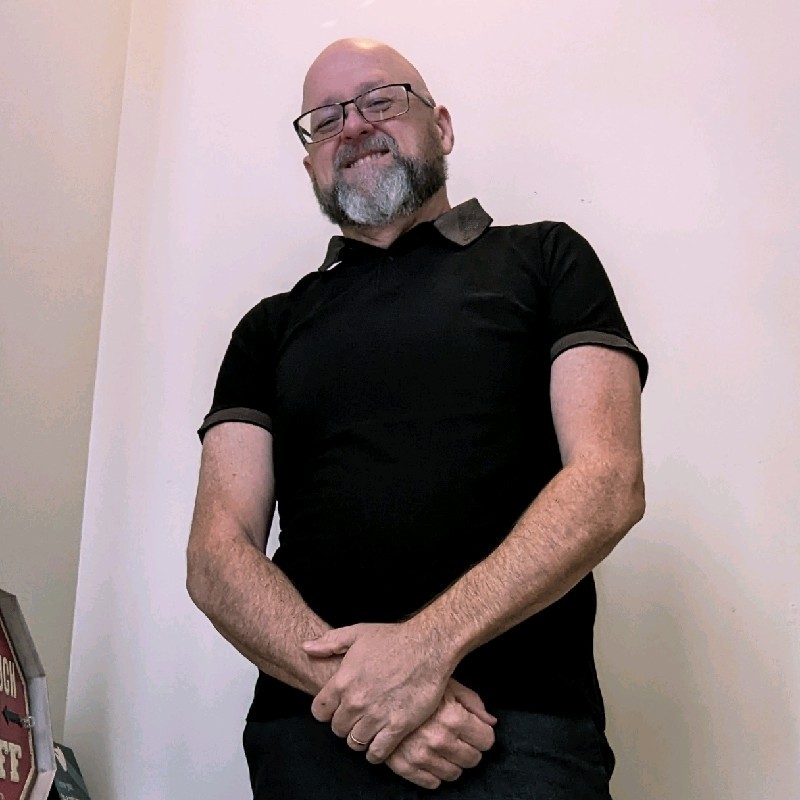DWDM Back To Basics
Posted by Larry Legg on Feb 10, 2023

In this edition of Learning with Larry, I’m going to discuss C-Band DWDM, a.k.a. Dense Wavelength Division Multiplexing, specifically in a simple passive point-to-point topology.
A simple passive point-to-point topology is recommended for distances under 80 kilometers in which you're trying to maximize your existing fiber utilization.
In this article, I’ll discuss G.652.D, one of the most common fiber systems put in the ground for telephony purposes. G.652.D is better known as SMF-28 because, you know, everything needs two names. Kind of like how folks in the Southern U.S. call all soft drinks “Coke” whether it technically is or not. In this case, “Coke” is Corning’s SMF-28 name for G.652.D fiber.
If you have a campus or a pair of PoPs [Point of Presence] that need to be connected, or a couple of locations for a business, you can use passive DWDM to provide a simple solution to maximize your fiber, whether that fiber is leased or owned. Passive DWDM allows you to put multiple wavelengths between two locations where you have two fibers.
This is accomplished with wave-specific optics, or optics that can be tuned with a Multiplexer (Mux) and a Demultiplexer (Demux) on both ends of the circuit or connection. To keep it simple, I’m going to call the combination of these items “fiber links”, which will carry multiple Ethernet links.
Fiber links are used for connections under 80 kilometers, especially in 10 gig systems – because once you go over 80km, fiber links require dispersion compensation and possibly amplification. Those topics require more depth, and we’ll cover those in the future.
So, we have a Mux, a Demux, and 10GB wavelength-specific SFP – which also applies to 1 gig but is not nearly as common. Because this is supposed to be “simple”, we're going to exclude fiber channel.
In this “fiber link”, you’ll be connecting a pair of wavelength-specific transceivers between the Mux/Demux. You’ll need transceivers that are wavelength-specific for your switch or router or interface.
Place the optic into the switch, and depending on interface, router or switch you have, you're either going to use that exact channel that's on a fixed object, or you're going to tune to the channel required on the multiplexer.
What Problem Does DWDM Solve?
Mainly, a DWDM, in this arrangement, reduces the need to build or lease multiple fibers between two locations. We're turning two fibers into multiple wavelength-specific channels (Ethernet links).
If there are eight channels, then you can use sixteen 10GB transceivers. If it's 16 channels, you get 32 10GB transceivers. If you get 32 channels, then 64 10 gig transceivers. You get the idea.
There's even an 80 channel wavelength out there, and you can get up to 96 channels available on the C-band. What you're mostly going to see is smaller bandwidth for smaller (under 40) channel counts. Most situations are 8 to 40 in this scenario.
At 10GB, there are not many complications if your fiber link is under 80km between two locations.
If you want to continue without amplification and dispersion compensation, you must do an “OEO” transition. OEO stands for Optical-Electrical Optical. (That’s not a typo.) It goes into a transceiver and back out of a transceiver. You will hear the legacy term “3R”, or Retime, Reshape, and Regenerate from the SONET-era telephony techs that is similar to OEO.
We do love our obscure acronyms.
I know you’re thinking: “Hey Larry! 80 kilometers is about 50 miles. How is that considered a short distance?”
Well, in the DWDM world, this technology was developed for long-haul fiber because back in the day, 80km was considered a long way. Today we’re looking at even farther expanses to connect cities. So, 80km can be considered short compared to higher-rate mass data networks going greater distances.
If you look at companies like Sprint in the 1980’s, some of the first fiber they put in the ground only had 14 strands. Today, how do you grow a network when everybody else is putting in a minimum of 96 or 144 strands in the ground? Especially if they’re using 432’s and 864’s when in ribbon format.
How do you compete with that?
You have to maximize your fiber.
And they did it with DWDM. That's how they survive, creating a new solution to a new problem. It didn’t really catch on until the mid-to-late 1990’s . . . you know, about when the Internet started to explode.
Initially DWDM was created for the needs of long-distance telephone services – remember when those were a thing? You had a landline in your house and signed up with any of the dozens of companies like MCI, AT&T or Sprint so you could call someone in another state without taking out a loan. Those services paved the way to put fiber in the ground.
Do you remember the Sprint ads? Their slogan was “You can hear a pin drop” – because it was a fiber optic line, which was rather unique at the time compared to all the microwave radio transport.
Is DWDM Recommended for Data Centers?
You might be wondering about data centers. Since they are really high capacity and have to handle such massive amounts of data, they need something beyond the realm of DWDM. Data centers lean more to the 100GB side, instead of the 10GB DWDM is known for.
Again, this is something less intense than high-volume data centers -- college campuses, 5G backhaul, pop-to-pop locations, ISP to business, hospital campuses, etc. -- where large amounts of Ethernet links go out to individual businesses and/or cell towers.
When you pick up your phone, the data doesn't go directly to a data center. It goes to a tower and then down the tower into a PoP, and then another PoP, and maybe into a long-distance network, cross-country into a data center, processed, and then gets a return trip all the way back to you.
Data centers have such large capacities for data going into them, point-to-point topology doesn’t need the power and volume they offer. DWDM makes the process simpler.
After you connect two endpoints and your transceivers to the Multiplexer, it just looks like a fiber in between the two switches. There's no power drawn from a passive device (hence the name passive WDM), so it really filters each individual channel out, passively.
Information on DWDM Sustainability and Being "Green"
If you're looking for a very “green” way to do things, the passive Multiplexer is an excellent way to multiply the amount of fiber. You’re not digging up the ground, so you're multiplying your fiber without any construction costs. More importantly, you are not using multiple cascaded transceivers, transponders or “Trans-duxes” which require additional power.
This is not voodoo. It's frequency selection.
DWDM also saves you a ton of money because it's not something you have to monitor. Once you put them in, just add and remove channels as you see fit. There are systems that can be cascaded and grown beyond 8 channels, with something called an Express Port on them which can allow you to grow those added channels.
"Can I try it before I buy it?"
A Real-Life Conversation with an Engineer
At a school up in New York where I was showing a client how this works and how simple it was. He said “But there's no power. How does it work without power if it’s a passive filter? Can I get some of this and try it before I buy it?”
I said, “Sure, I can arrange an evaluation. We have done this thousands of times and you won’t have any problems.”
He said “Really? I don't have to buy more fiber? Just connect this stuff up? Why did [Brand X] try to sell me this $150,000 system that I have to power, train my people and maintain software, not to mention monitor it all?”
Of course, he understood why someone would try to oversell him something he might not have needed, but he was still trying to understand how “less is more”.
In fact, it leaves a lot of folks in the I.T. business absolutely dumbfounded that you can do this. In their mind, it defies the network designs they were taught. In CCNA class, they don't teach you about this.
Why? The truth is, many OEMs just want to sell you an entire DWDM. They want to sell you not just the whole shebang, but the power and extra rack units and consumed devices on top of it. “Buy the license for our software -- oh, and you have to monitor all this stuff . . .”
They put it in your head that's what you have to do. And that's not the case at all.
I.T. people might remember the old joke: “No one ever got fired for buying [Brand X].”
But no one ever got promoted for buying [Brand X] either.
There’s the impression that very expensive OEM equipment is better, when there are often options that are no different and will save you.
With the passive DWDM setup, the question previously mentioned can be “How do we monitor it?” The answer is “The same way you monitor the link when you're on dark fiber. If the link goes down, you'll then see it in the switch. Or you'll see multiple links go down because chances are multiple ones are on that same fiber.”
Why DWDM is Easier and Less Expensive than Alternatives
Question — What other benefits are there in a DWDM arrangement?
Answer — Two things: 1) It's easy. 2) It’s probably cheaper than the alternatives.
Q — Why is it easy?
A — Simplification. Usually when you buy fiber between two points, you're putting them all on the same table sheet. There’s no difference if there are diverse fibers in the same cable sheath?
Q — And how is it cheaper?
A — Mainly because a DWDM setup requires no construction cost.
Q — This sounds too good to be true. If it’s that simple, why doesn’t everybody do it?
A . . .
- It might be in an I.T. Department where your network hasn't grown to the point that you need something like DWDM. Maybe your old school telephony network guy retired that had all that knowledge in his head and nobody talks about it now.
- Then there are budgets that have room to purchase multiple fibers when, practically speaking, you may not need that much. Or you have somebody else providing infrastructure, when all you need is the link.
- It could be no one is asking for something that simple because the I.T. Department doesn't always talk to the infrastructure folks.
- And the infrastructure folks might say, “Well, the I.T. Department says we need to get more fiber in there.”
- There’s a gap because they don't understand there is a solution like this. You might not need a sledgehammer to swat that fly.
Sometimes, as things get more complicated, we need to go back to basics to find alternatives that may solve the issues without spending more than needed. We live in an era that has the impression more is better. Sometimes it is. And sometimes you’ll be just fine with the right tools for the job.
There are situations where a problem can be solved for $6,000 instead of $150,000. Too good to be true? Not if it works.
Want to find out what will work in your situation? Hit me up, and let’s talk about your challenges! Tell me the network problems you need to solve, and another team member or I will get you some solutions!
